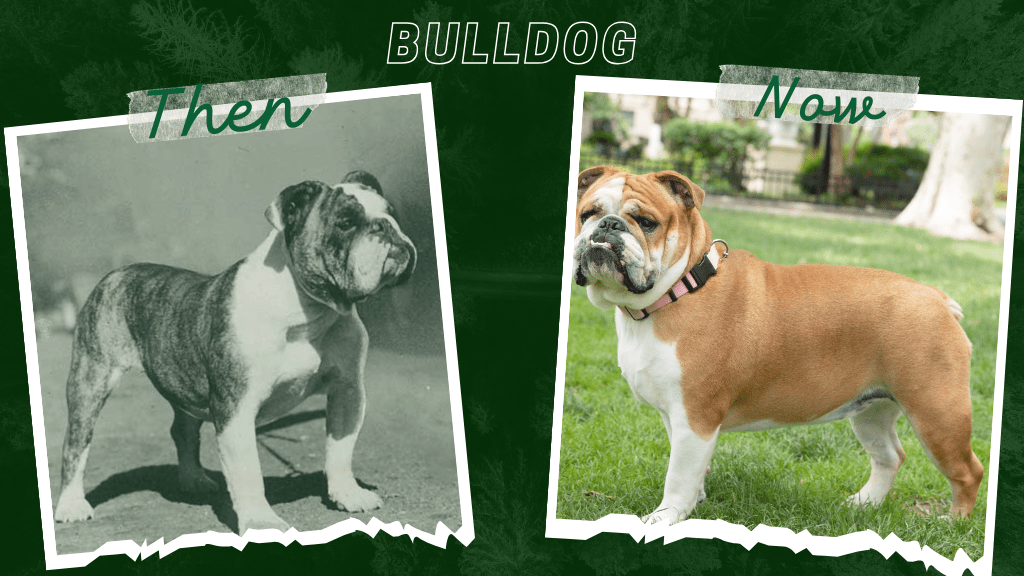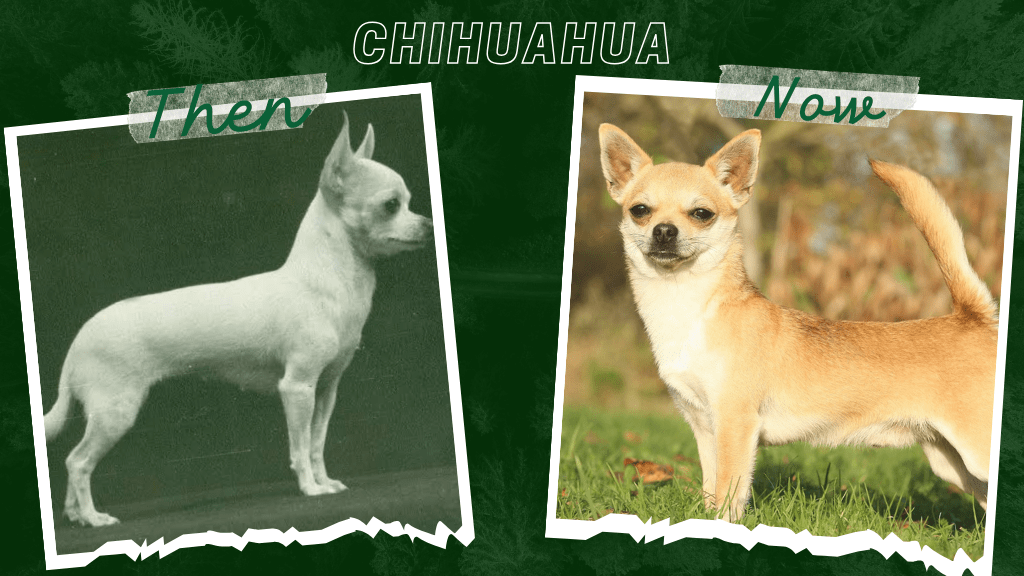How Dogs Have Evolved Over 100 Years!
Introduction
Discover how dogs have evolved over 100 years, exploring the remarkable changes in appearance, temperament, and roles they’ve undergone.
Dogs, often referred to as “man’s best friend,” have undergone a remarkable evolutionary journey over the past 100 years.
From their humble beginnings as wild canids to the diverse array of breeds we see today, the evolution of dogs is a testament to the enduring bond between humans and animals.
Understanding how dogs have evolved over time not only sheds light on their incredible adaptability but also provides insights into human history and culture.
Early Domestication of Dogs
The domestication of dogs is a complex process that likely began tens of thousands of years ago.
While the exact origins of domestic dogs remain a topic of debate among researchers, genetic studies and archaeological evidence suggest that dogs were likely domesticated from wolves in multiple regions around the world.
One prevailing theory is that dogs were initially attracted to human settlements in search of food scraps, forming a mutually beneficial relationship with early humans.
Over time, these proto-dogs became more accustomed to human presence and gradually evolved into the domesticated companions we know today.
Archaeological evidence, such as ancient dog burials and depictions of dogs in early human art, further supports the notion of a close relationship between dogs and humans in ancient times.
For example, excavations at sites like the Mesolithic settlement of Star Carr in the United Kingdom have uncovered the remains of dogs buried alongside humans, suggesting a special bond between the two species.
Changes in Dog Breeds Over Time
One of the most striking aspects of dog evolution is the incredible diversity of breeds that have emerged over the centuries.
From the towering Great Dane to the tiny Chihuahua, dogs come in a wide range of shapes, sizes, and temperaments, thanks to the process of selective breeding.
Selective breeding, also known as artificial selection, involves choosing individuals with desired traits and breeding them to produce offspring with those traits.
This process has been practiced by humans for thousands of years and has played a significant role in shaping the characteristics of domesticated animals, including dogs.
In the case of dogs, selective breeding has been used to enhance specific traits such as size, coat color, and temperament, resulting in the vast array of breeds we see today.
For example, breeds like the Border Collie were selectively bred for their herding abilities, while breeds like the Dachshund were bred for their small size and ability to hunt burrowing animals.
However, the pursuit of specific traits through selective breeding has also led to certain health problems in some dog breeds. For instance, breeds with exaggerated features, such as flat-faced breeds like the Bulldog and Pug, may be prone to respiratory issues due to their shortened airways. This highlights the importance of responsible breeding practices and the need to prioritize the health and well-being of dogs.
Effects of Human Influence
Human influence has played a significant role in shaping the evolution of dogs over the past 100 years. Cultural and societal attitudes towards dogs have influenced breeding practices and the types of roles that dogs fulfill in human society.
In many societies, dogs have been bred for specific purposes, such as hunting, herding, and companionship.
For example, breeds like the Labrador Retriever and Golden Retriever were originally bred as hunting companions, prized for their retrieving abilities and gentle temperament.
Similarly, breeds like the German Shepherd and Belgian Malinois were developed for their intelligence and trainability, making them well-suited for police and military work.
Technological advancements have also had a profound impact on the evolution of dogs. The advent of modern veterinary medicine, for example, has led to significant improvements in the health and longevity of dogs.
Vaccinations, deworming treatments, and surgical procedures have all contributed to the overall well-being of dogs and have allowed certain breeds to thrive in ways that would have been impossible in the past.
Furthermore, advances in reproductive technologies have made it easier for breeders to produce desired traits in dogs through techniques such as artificial insemination and embryo transfer.
While these technologies offer new opportunities for improving breed health and diversity, they also raise ethical questions about the commodification of animals and the potential for exploitation.
Modern-Day Evolutionary Trends
In recent years, advances in genetic research have provided new insights into the evolutionary history of dogs. Studies of ancient DNA have revealed the genetic relationships between different dog breeds and their wild ancestors, shedding light on the pathways of domestication and the spread of dogs across the globe.
One notable trend in modern dog evolution is the increasing emphasis on health and genetic diversity in breeding practices.
With growing awareness of the health issues associated with certain breeds, there has been a push for breeders to prioritize genetic diversity and avoid excessive inbreeding.
Organizations like the Canine Health Information Center (CHIC) work to promote health testing and responsible breeding practices to ensure the long-term well-being of purebred dogs.
Additionally, there has been a growing interest in the preservation of rare and ancient dog breeds that are at risk of extinction.
These breeds, which often have unique genetic traits and historical significance, play an important role in maintaining biodiversity within the canine gene pool.
Efforts to conserve these breeds include breeding programs, genetic research, and public education initiatives aimed at raising awareness about their cultural importance.
How certain dog breeds have changed over the past 100 years
1. Bulldog

• 100 Years Ago
• Present
2. German Shepherd

• 100 Years Ago
• Present
Modern German Shepherds may exhibit a more sloped back and angulated hindquarters, as breeders have placed greater emphasis on conformation standards for show purposes.
Additionally, there has been a divergence between show lines and working lines, with working lines often retaining a more traditional appearance and temperament.
3. Labrador Retriever

• 100 Years Ago
Labradors of the past were primarily bred as working dogs for retrieving game, with a focus on intelligence, trainability, and physical endurance.
• Present
While Labradors today still excel as working dogs and companions, there has been some variation in appearance between show and field lines.
Show lines may exhibit a stockier build and blockier head, while field lines tend to have a leaner, more athletic appearance.
Pug

• 100 Years ago
• Present
Modern Pugs often have a more pronounced brachycephalic skull, with a flatter face and more prominent wrinkles.
While these features are prized by some breed enthusiasts, they can contribute to respiratory issues and other health problems.
Chihuahua

• 100 Years Ago
Lorem ipsum dolor sit amet, consectetur adipiscing elit. Ut elit tellus, luctus nec ullamcorper mattis, pulvinar dapibus leo.
• Present
While the size and appearance of Chihuahuas may not have changed significantly, there has been a greater emphasis on temperament and socialization in modern breeding practices to ensure that Chihuahuas are well-adjusted companions.
Border Collie

• 100 Years Ago
Border Collies were primarily valued for their intelligence, agility, and herding abilities, with a focus on functionality over appearance.
• Present
While the overall appearance of Border Collies may not have changed drastically, there has been some variation in coat color and length due to selective breeding practices.
Additionally, there has been a greater emphasis on breeding for specific traits in working lines versus show lines.
Dachshund

• 100 Years Ago
Dachshunds of the past were bred for their elongated body and short legs, making them well-suited for hunting burrowing animals.
• Present
While the basic body shape of Dachshunds remains the same, there may have been some variation in coat color and pattern due to selective breeding.
Additionally, there has been a greater emphasis on breeding for temperament and health in modern breeding practices.
Siberian Husky

• 100 Years Ago
Siberian Huskies were bred primarily as sled dogs by the Chukchi people of Siberia, valued for their endurance, strength, and ability to withstand harsh climates.
• Present
While the overall appearance and purpose of Siberian Huskies may not have changed significantly, there has been some variation in coat color and pattern due to selective breeding.
Additionally, there has been a greater emphasis on socialization and training in modern breeding practices to ensure that Huskies are well-behaved companions.
Golden Retriever

• 100 Years Ago
• Present
While Golden Retrievers today still excel as hunting dogs and companions, there may have been some variation in coat color and texture due to selective breeding practices.
Additionally, there has been a greater emphasis on health testing and genetic diversity in modern breeding practices to ensure the overall well-being of the breed.
Beagle

• 100 Years Ago
• Present
While the overall appearance and purpose of Beagles may not have changed significantly, there has been some variation in size and coat color due to selective breeding.
Additionally, there has been a greater emphasis on temperament and socialization in modern breeding practices to ensure that Beagles are well-suited for family life.
Conclusion
The evolution of dogs over the past 100 years is a testament to the enduring bond between humans and animals. From their origins as wild canids to the diverse array of breeds we see today, dogs have adapted to thrive in a wide range of environments and fulfill a variety of roles in human society.
As we continue to learn more about the genetic and cultural factors that have shaped the evolution of dogs, we gain a deeper appreciation for the unique relationship between humans and their canine companions.
By promoting responsible breeding practices and prioritizing the health and well-being of dogs, we can ensure that future generations of dogs continue to bring joy and companionship to people around the world.
Table of Contents
FAQs
1. How have dog breeds changed over the past century?
Dog breeds have undergone significant changes in terms of appearance, temperament, and purpose due to selective breeding practices and shifts in societal attitudes.
2. What factors have influenced the evolution of dogs over the last 100 years?
3. Have all dog breeds changed in the same way over the past century?
4. How has selective breeding impacted the evolution of dog breeds?
Selective breeding has led to the development of specific traits within dog breeds, resulting in changes in appearance, temperament, and working abilities over time.
5. What are some examples of how certain dog breeds have evolved over the past 100 years?
Examples include changes in physical appearance, such as the development of more exaggerated features in breeds like the Bulldog and Pug, as well as shifts in temperament and working abilities in breeds like the German Shepherd and Labrador Retriever.
6. Have health considerations played a role in the evolution of dog breeds?
7. Are there any efforts to preserve older or less common dog breeds?
8. What can we learn from studying the evolution of dogs over the past century?
Studying the evolution of dogs provides insights into human-animal relationships, the impact of selective breeding on genetic diversity, and the importance of responsible breeding practices for the health and welfare of dogs.
- You might be interested in reading this posts as well

Shielding Homes: The Vital Roles of Protective Dog Breeds

“Unveiling the Charm: Top 05 Friendliest Dog Breeds Revealed”

“The Ultimate Guide to Fastest Dog Breeds for Running”

08 Adorable Fluffy Dog Breeds That Will Melt Your Heart

“Faithful Companions: Discovering the Most Loyal Dog Breeds”

